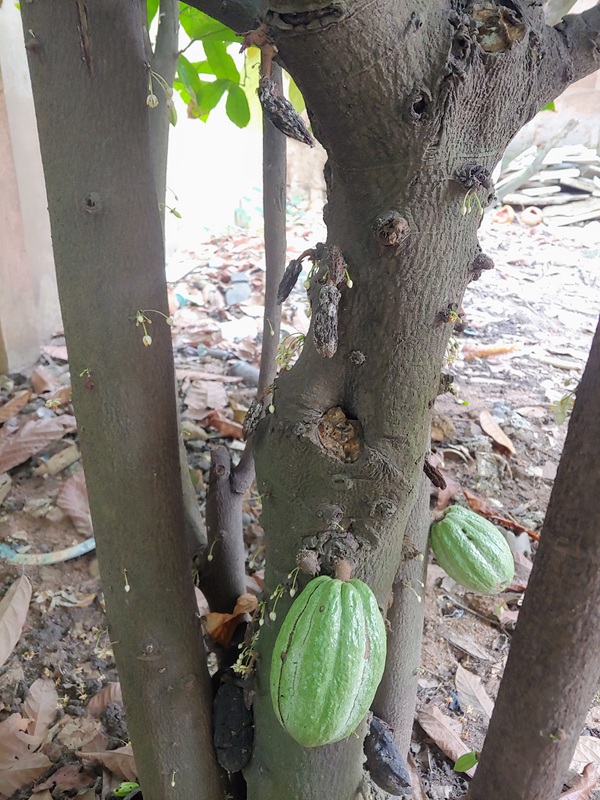
Black Pod Disease: A Big Problem for Our Cocoa
If you grow cocoa, you might have heard about a sickness called black pod disease. It’s a really serious problem that can make your cocoa pods rot and lead to a lot less cocoa to sell. Let’s learn what it is and how we can stop it.
What is Black Pod Disease?
Black pod disease is caused by tiny, living things called Phytophthora. Think of them like bad germs for your cocoa trees, but they are not exactly germs. These tiny things love wet and warm places, which is why they are common especially during the rainy season. They attack all parts of the cocoa tree, but they are easiest to see on the cocoa pods themselves.
How to Know Your Cocoa Has Black Pod
When your cocoa trees have black pod disease, you will see some clear signs:
- Black or Brown Spots: Small spots will appear on the cocoa pods. These spots will quickly grow bigger and turn black or dark brown.
- Rotting Pods: The inside of the pod will start to rot, and the beans inside will be ruined. Sometimes, the whole pod will become hard and black.
- White Mold: In very wet weather, you might even see a white, powdery mold growing on the surface of the black spots.
- Sick Flowers and Young Pods: The disease can also attack the small flowers and young, baby pods, causing them to turn black and die.
- Stem Problems: Sometimes, the branches and trunk of the tree can also get infected, showing dark patches or even oozing liquid.
If you see these things on your cocoa trees, it’s likely they have black pod disease, and you need to take action quickly.
Easy Ways to Get Rid of Black Pod Disease
The good news is that there are several things you can do to fight black pod disease and keep your cocoa farm healthy. Here are some simple steps:
- Clean Your Farm Regularly (Sanitation):
- Pick Up Bad Pods: Every week, go through your farm and pick all the cocoa pods that have black spots or look rotten. Also, pick up any old, fallen pods from the ground. These bad pods have the “germs” that cause the disease, so getting rid of them helps stop it from spreading.
- Don’t Leave Rubbish: Keep your farm clean from weeds and other plant waste. These can create a damp environment where the disease likes to grow.
- Prune Your Cocoa Trees:
- Open Up the Trees: Trim the branches of your cocoa trees so that sunlight can get through and the air can flow freely. This helps to dry the pods and leaves, making it harder for the disease to grow.
- Harvest on Time:
- Don’t Wait Too Long: Pick your cocoa pods when they are ripe. Leaving them on the tree for too long, especially when it’s wet, can make them more likely to get infected.
- Use Medicine for the Trees (Fungicides):
- Spray with Copper: There are special sprays called fungicides that can kill the “germs” that cause black pod disease. Sprays that contain copper are often used and work well. You need to spray the pods and the trunk of the tree.
- Follow Instructions: If you use these sprays, make sure to follow the instructions on the container carefully. It will tell you how much to use and when to spray.
- Good Farm Management:
- Don’t Plant Too Close: When you plant new cocoa trees, give them enough space so they are not too crowded. This helps with air flow.
- Make Sure Water Drains Well: If your farm stays very wet after rain, try to make ways for the water to drain away. The “germs” that cause black pod love wet conditions.
By doing these things regularly, you can help protect your cocoa farm from black pod disease and have a better harvest. Remember, stopping this disease is important for all cocoa farmers so we can all have healthy and productive farms. If you are not sure what to do, ask other experienced farmers or someone from the agricultural extension services in your area—they can give you good advice for your specific farm